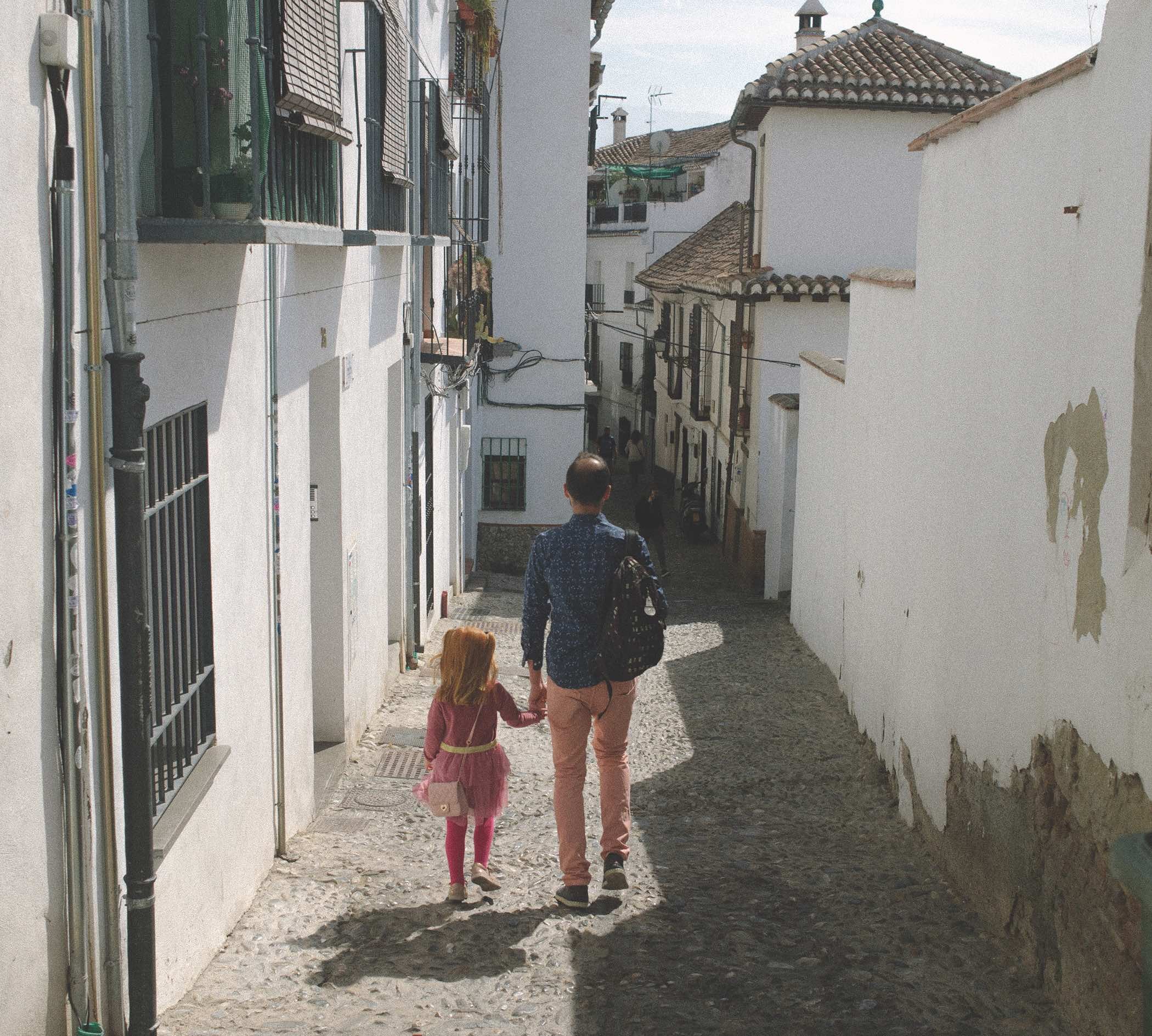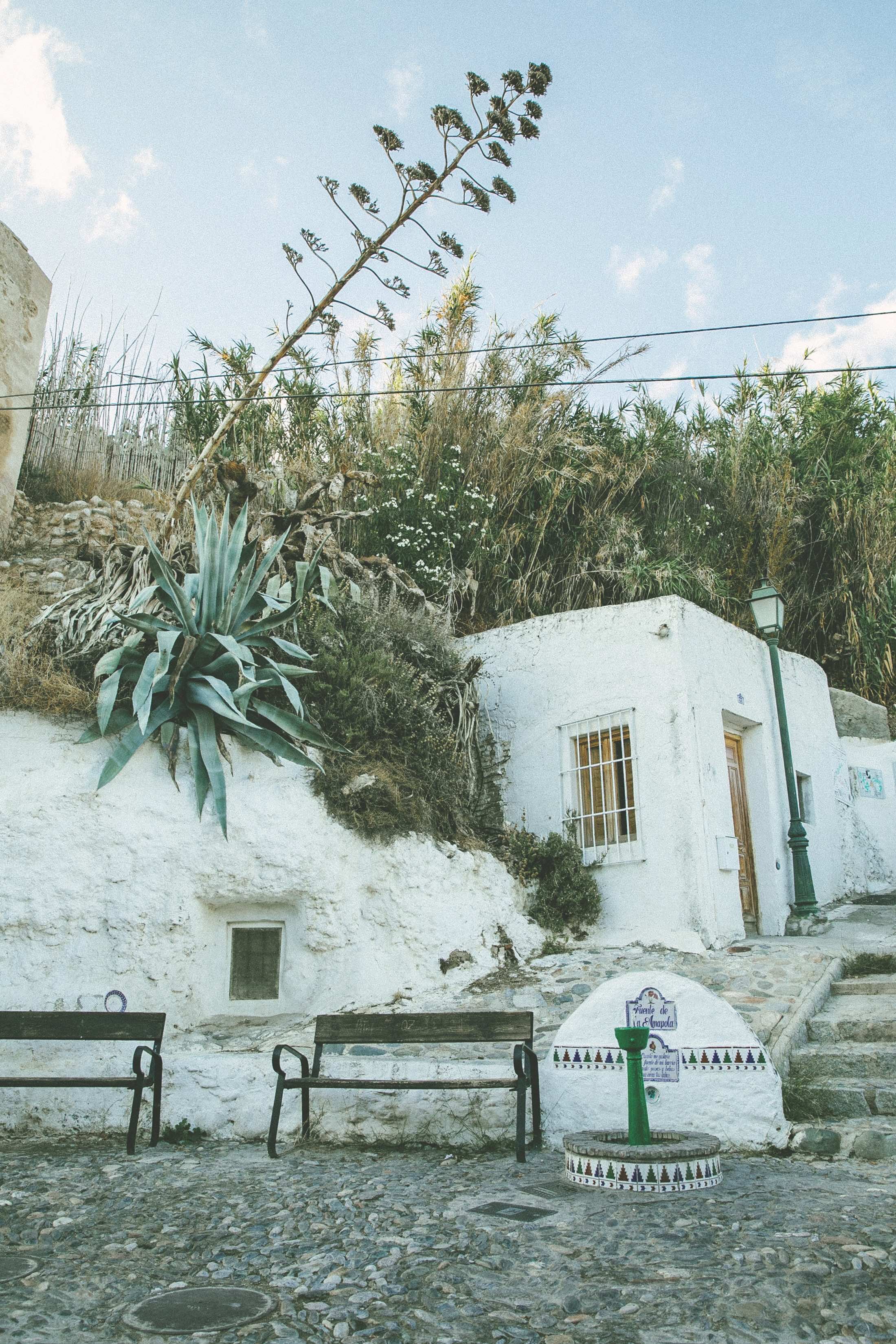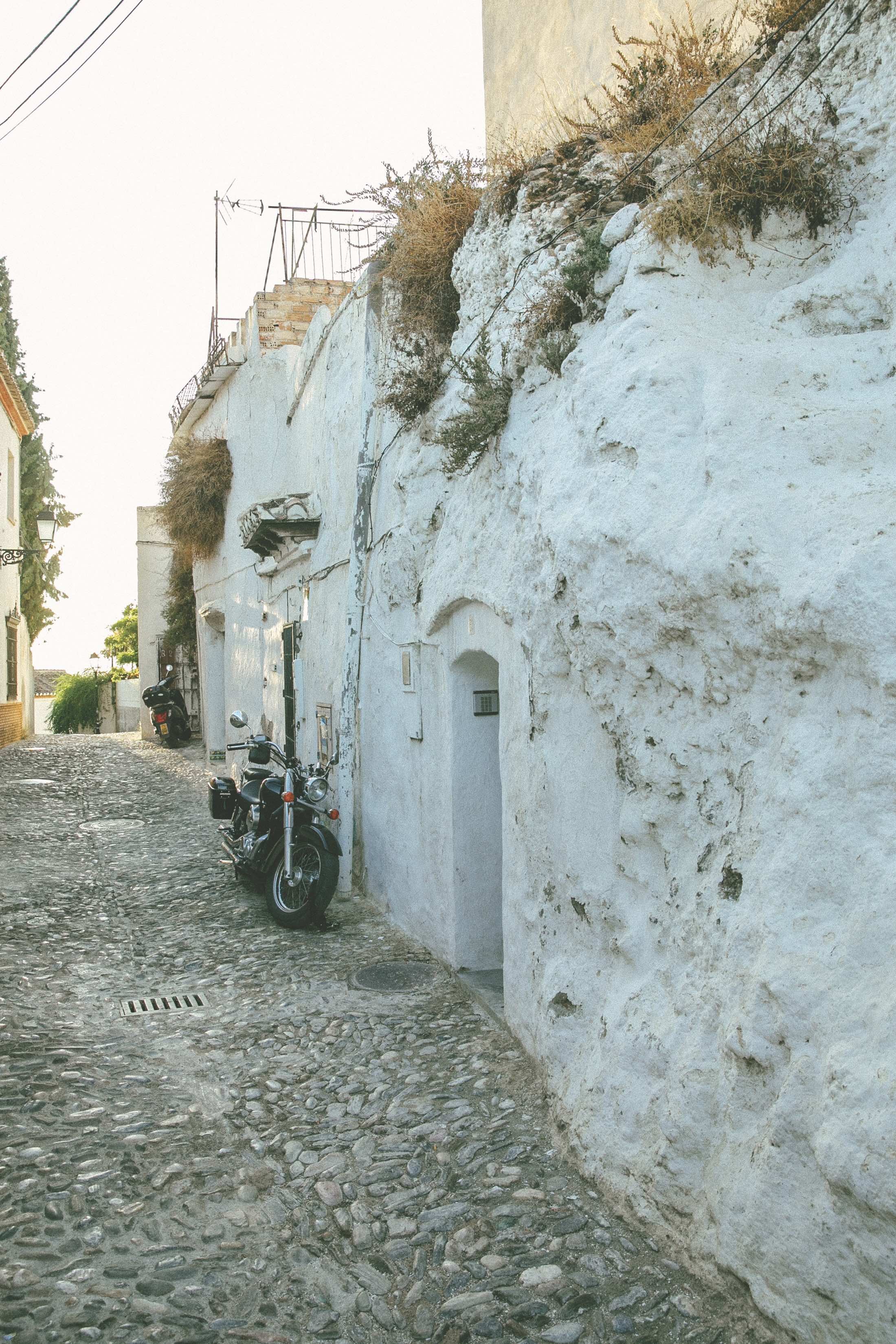The Way it is, The Way it Always Was, Granada
The view from our Airbnb — a Jewish-owned home in the Arab quarter, a picture of Granada’s layers of cultural history.
A Tapas Pilgrimage
Unloading the Fiat onto our backs, we sandwich-park for a few days and unwittingly set out on the hike before us to meet Ana, our Airbnb host. It’s forty flights to our perch through medieval corridors on centuries-worn paths of stone, an ascent well worth the emergency visit to the hammam tomorrow. We arrive just in time to open the shutters to sunset and gasp at the city view.
Hungry for an authentic taste of Spain, we drop our backpacks and let gravity and intuition lead to what would become a nightly descent: for culture, for dancing, but first, for tapas. You have to pass up the squares and turn down the side streets if you want to avoid being a victim of local food fraud. Eventually, we stumble upon Bodegas Castaneda, “a household name for Granadinos of all generations, a famous old bar, for its jamóns and chaotic atmosphere.”
Unsure yet whether this is chaos or charm, we discover the narrative and elbow our way to a footprint at the bar. True tapas culture means you are standing and the house chooses your plate.
It’s free with a glass of wine. The scene, one of wizardry by the beer-slinging benefactors, is older than its patrons. Here, being polite is like forgoing your birthright. You yell forward, they yell backward, and small plates are dealt down the bar like hands at a poker table. Accompanying the four-ish rounds of Estrella Damm are crusty bread drizzled with oil, alternating stacks of blue and manchego cheese, roasted green chiles, gambas rojas and Jamón Ibérico sliced from the dozen or so curing just over our heads. The thrill of this rabblement is that you’re both required and welcomed to join the Spaniard way: There is no fun in perfection.
maneuvering a manual hundreds of miles
replace the prairies and the trees with olives groves
every wrong turn leads to a new discovery a new way the sun hits the earth
we drop in
like kids unfamiliar and open
watercolor & journal entry — October 20, 2019 — Todd Scott
often originality is lost
in the desperate search for perfection
in this absence of presence
we elude reality
we suffer and search
the past and the fantasies of future
here it remains
intact and unadaultered
by opposing the desire to distort by not only accepting
but by embracing
what is with the knowing
that beauty lies in the variance
this is presence
— natalie cartwright
Left: Cave Dwellings - Built by Jewish and Muslim populations in the 16th century, after they were expelled from their homes
Right: The Alhambra - view from the rooftops of Sacromonte
Dancing in the Streets
Taking cues from Granada travel writers(1), we wander toward Sacromonte, vertically up hand-patterned rock streets too narrow for a car. We’re giddy knowing the destination is white caves where gypsies still dance in the streets and any path angled up will get you there.
Being suckers for local legends, seeking out La Fragua and its Cervezas Alhambra-swigging owner, hippie hang-abouts and the cheapest glass of wine in town(1), was the end of the day’s rainbow. After being introduced to the green-bottled Southern Spain standard of beers, we overheard the no-BS bartender smoothly articulate Spanish culinary swagger. Pointing to a wine label she said, “Don’t worry about the name, just worry about where it’s from.”
To find flamenco, one must simply listen and follow the sound. Into the orange glow of an open door off the street, we hear staccato claps and snaps and peek our heads in. A young teacher and her younger students are only practicing but tell us of their favorite place to watch the masters.
Flamenco — still a revered art form worthy of lifelong passion
The Alhambra
“One of the most enchanted, inscrutable, maddeningly beautiful structures ever created by man.”
While the current chapter of Granada is a beautiful picture of coexistence, the past is layered with conquest and succession. The Alhambra is a walk through Granada's history book. Despite being Europe’s most visited tourist attraction, it remains an authentic inscription of Andalusia’s past. Just to reach the gates, you walk a mile through elms, brought by the English, that form a towering cape around the Arabian roses, myrtles and orange trees. The Romans originally broke ground here, but the Moorish architecture we see today began in the 13th century by Islamic caliphates. Spanish kings launched the Reconquista in 1492 and reclaimed the fortress, instituting a new purpose of contemplation through carvings in wood and stone, channeling water through the courtyards and reflecting on how light and shadow coexist in nature. Much like the flavors of Mexican cuisine, which were introduced through their occupiers over centuries, the art here, entirely built into the architecture, records its caretakers' musings.
1TheCultureTrip.com
2Parts Unknown: Spain
The Alhambra - built over two hundred years from the 13th to 15th centuries
“They saw mathematical patterns in the sky and on earth, the way water moved and rippled, the way things grew, the simple pine cone, a fern, a pomegranate, and they thought about the basic truths these things might represent.”(2)
photography by Todd Scott














